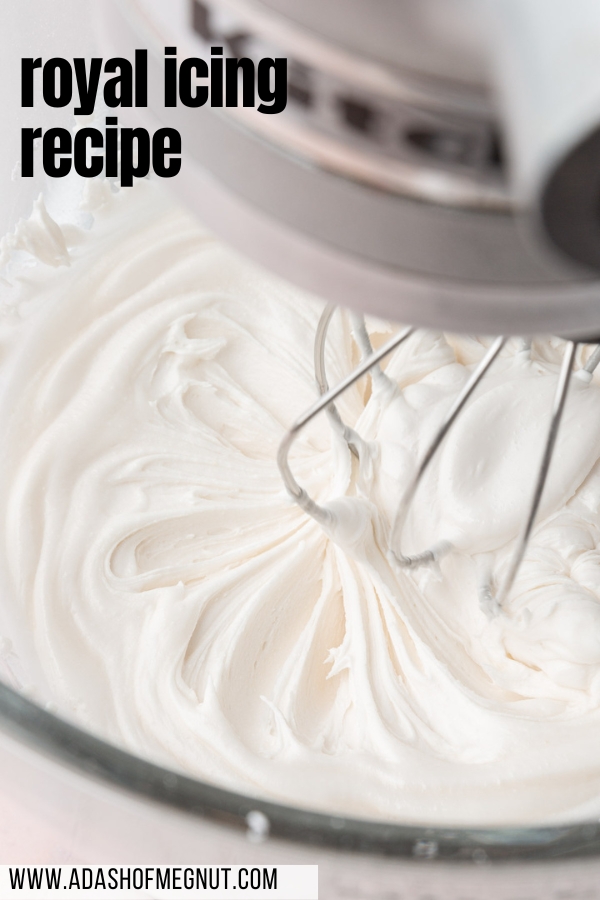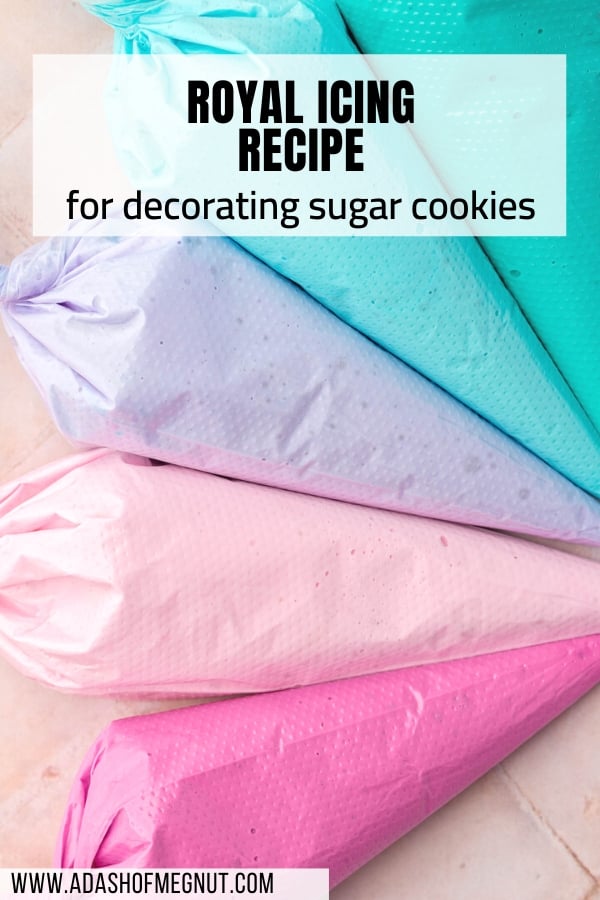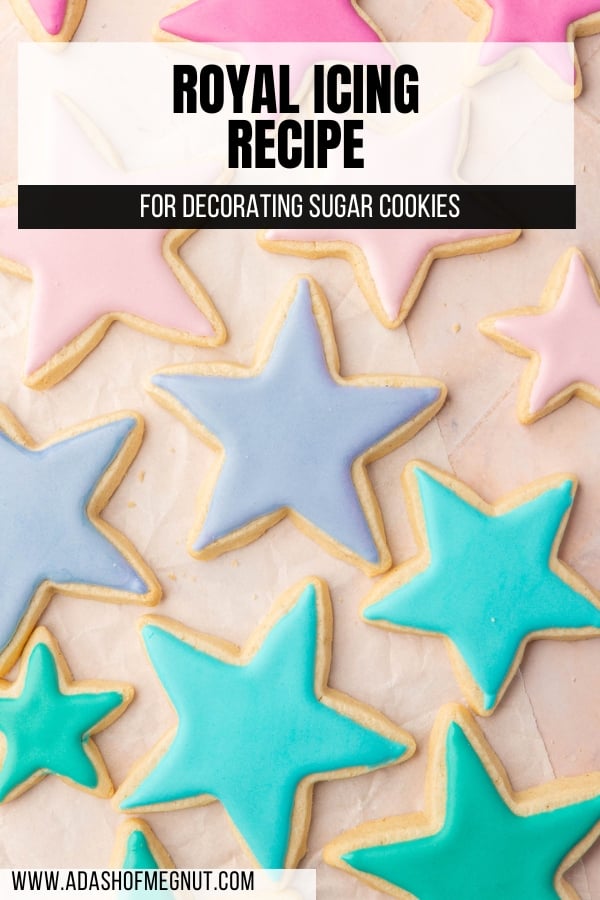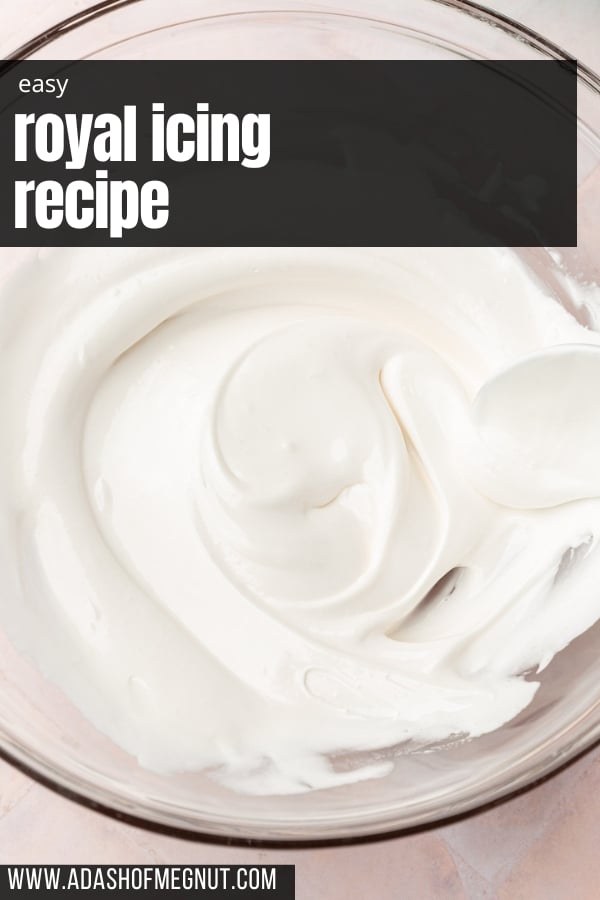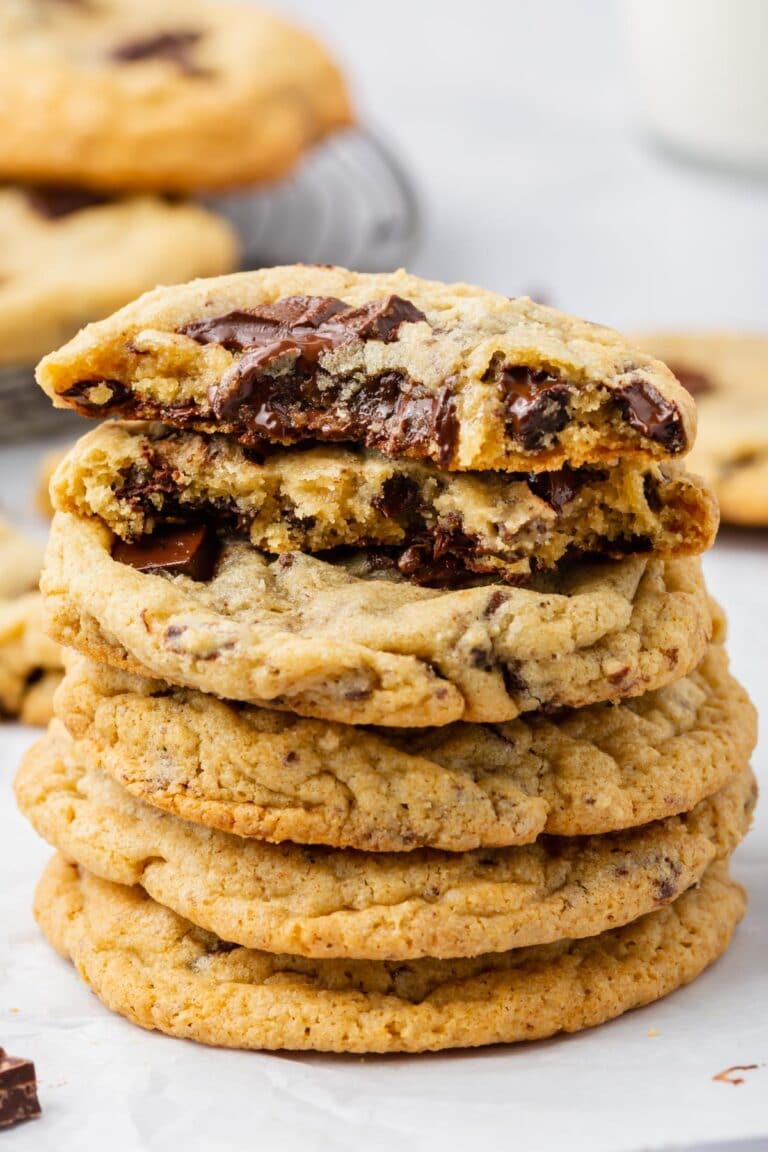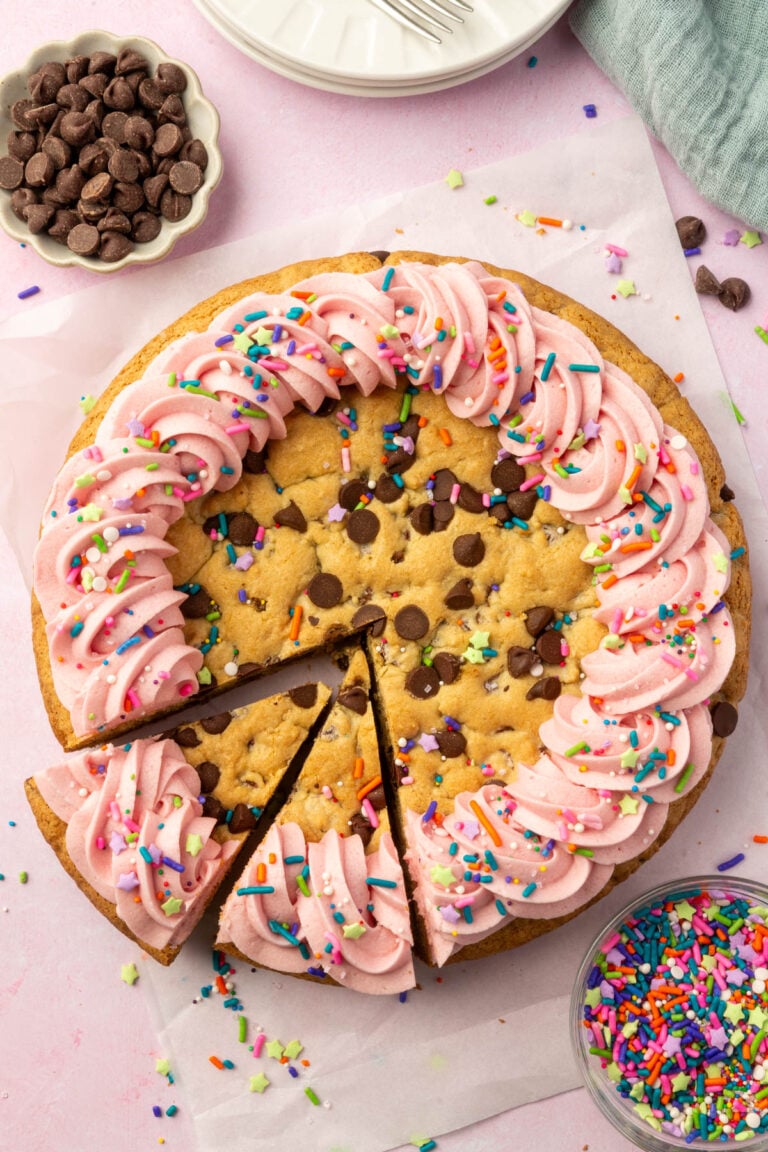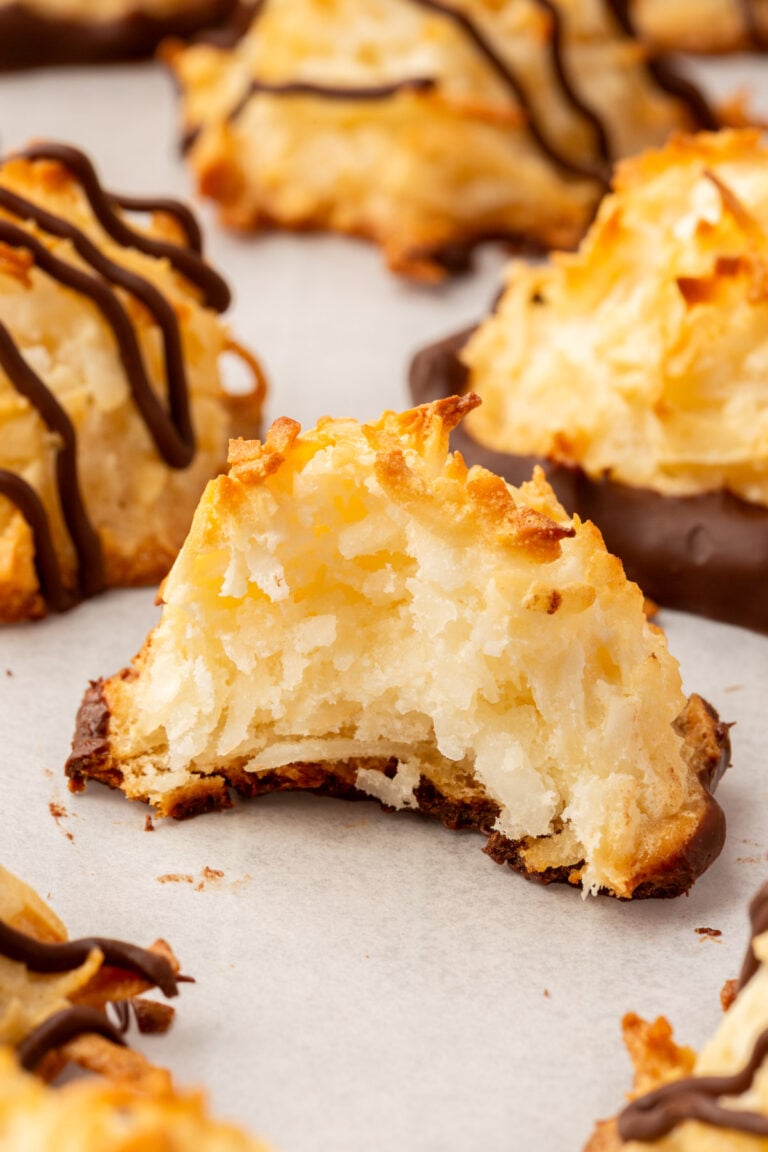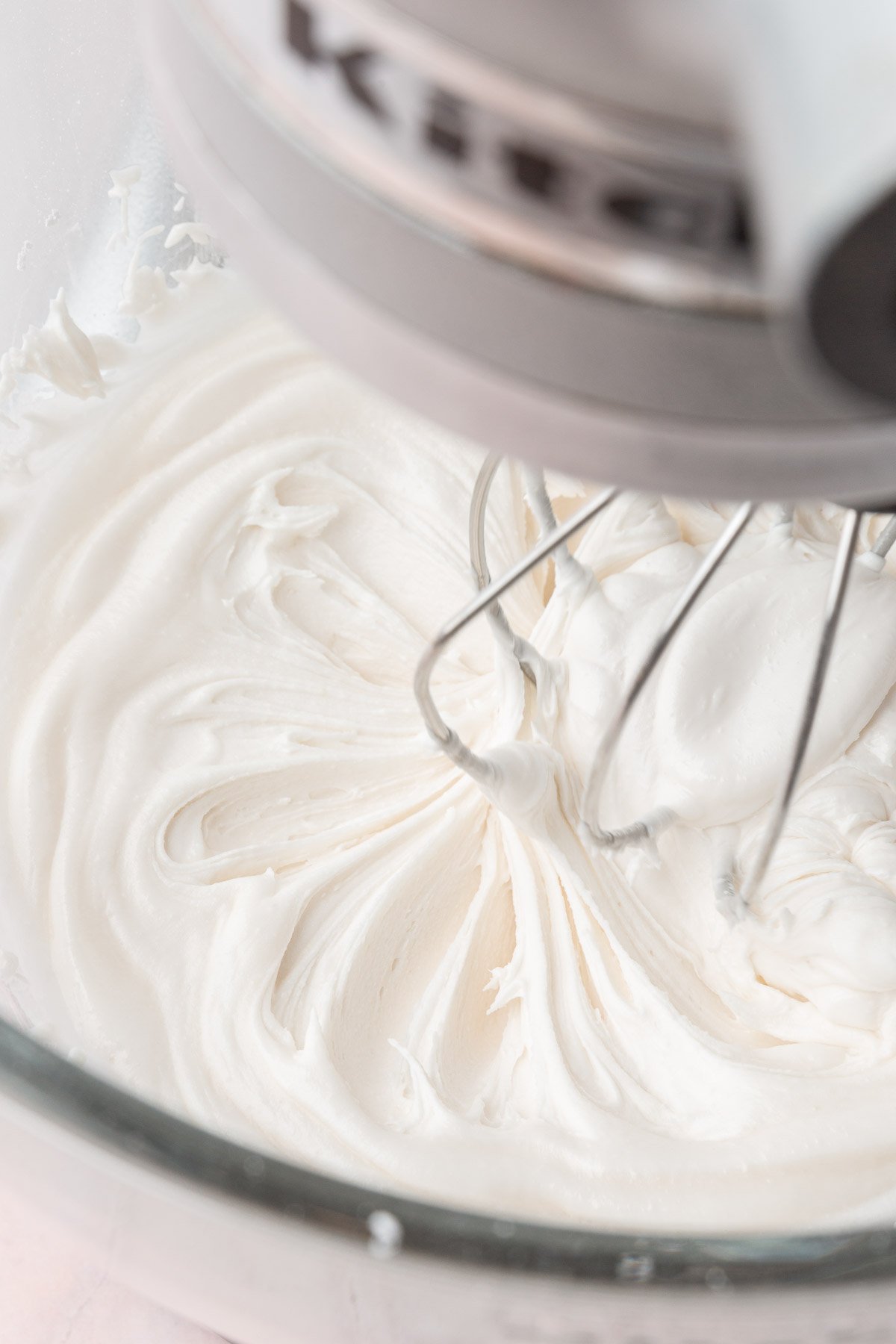
If you’re looking for a tried-and-true recipe for royal icing, this is the one for you! This royal icing with meringue powder recipe has been my go-to for over 15 years for all of my sugar cookie decorating needs!
With just 4 simple ingredients, it’s really easy to make this recipe with a stand mixer! I love that it uses meringue powder, which is shelf stable, as it lessens any risks for salmonella from raw egg whites. Plus, who wants to separate egg whites when you can add a few tablespoons of meringue powder instead.
If you’ve never heard of royal icing before, it is a smooth, hard-drying icing, perfect for decorating cookies and cakes. Made from powdered sugar, water, and meringue powder or egg whites, it’s easily colored and flavored for versatile designs on your sugar cookies.
You’ll love this recipe because:
Ingredients
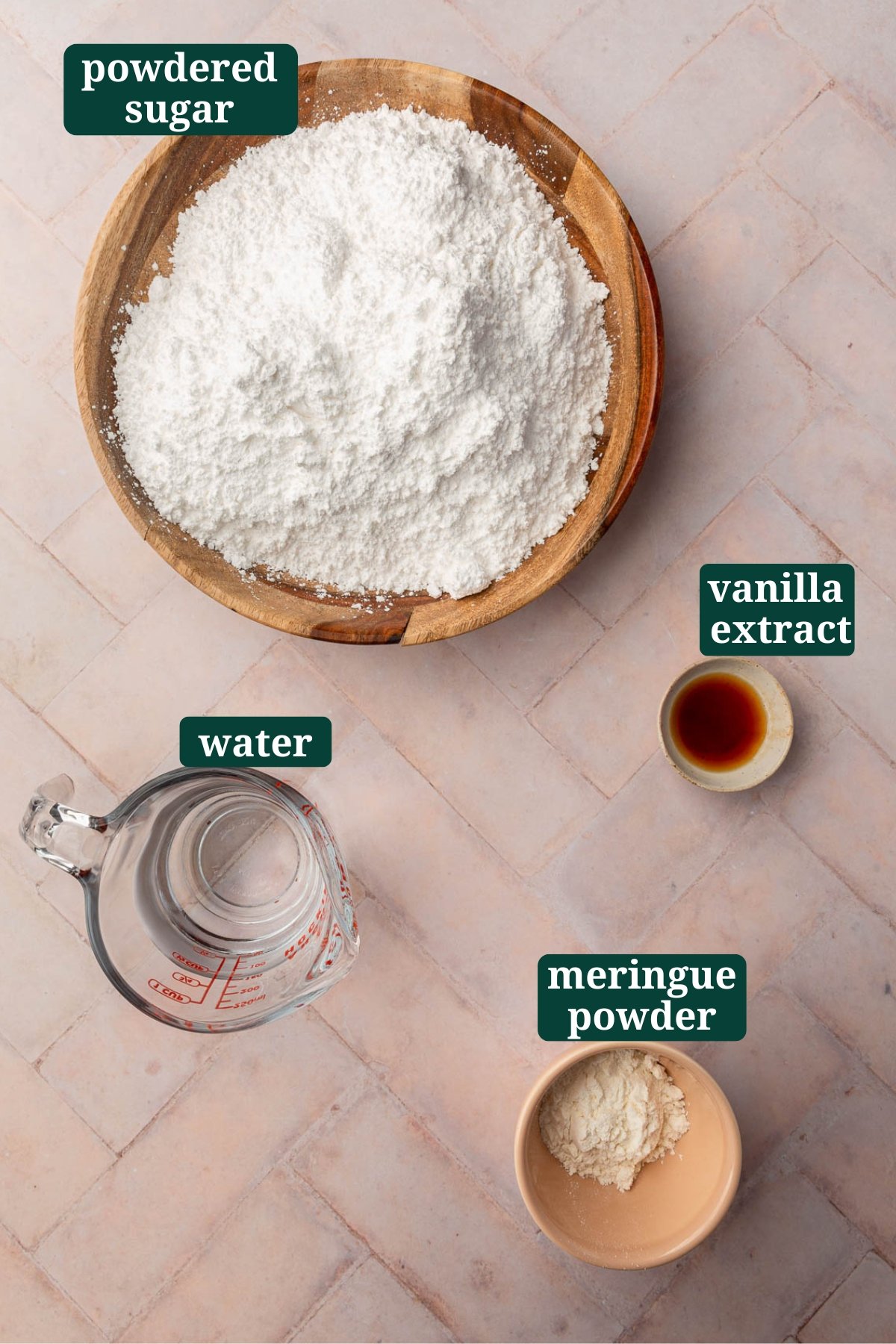
Ingredient Notes
- Powdered Sugar – You’ll want to use powdered sugar to make your royal icing, which is sometimes known as confectioners’ sugar or icing sugar. You cannot substitute granulated sugar or other types of sugar, as they will not dissolve properly and will give the icing a grainy texture.
- Meringue Powder – Meringue powder is a baking ingredient primarily used as a substitute for raw egg whites. It’s a fine, white powder made from dried egg whites, sugar, and added stabilizers, such as cornstarch, and sometimes includes flavorings or acidity regulators like citric acid. I prefer AmeriColor brand meringue powder, which I find on Amazon, but you may be able to get it at craft stores or cake decorating stores as well.
- Water – Use room temperature water for best consistency. The amount of water can be adjusted based on desired icing thickness; start with less and gradually add more.
- Vanilla or Almond Extract – This adds flavor to the icing. You can choose either based on preference, but ensure it’s pure extract for the best taste. Artificial flavors can leave a chemical aftertaste, especially when the recipe is not being cooked
- AmeriColor Gel Food Coloring – Gel food coloring is preferred over liquid as it provides vibrant colors without thinning the icing. Start with a small amount and add more as needed to achieve the desired color.

For achieving the perfect consistency in royal icing, the amount of water added is key. Start with the lesser amount of water and gradually add more, if necessary, mixing well after each addition. This gradual approach allows you to reach the desired consistency without accidentally making the icing too thin, which is particularly important for intricate piping work where a stiffer icing is needed. Remember, it’s much easier to thin out a thick icing than to thicken a runny one.
Step-by-Step instructions
It’s very simple to make royal icing with meringue powder at home! The follow photos with matching steps are not meant to be the full recipe, but are there to help you see the royal icing at various stages so you know what to look for while you make it.
For the ingredient list with measurements, full instructions, printable recipe, and additional notes, please scroll down to the recipe card.
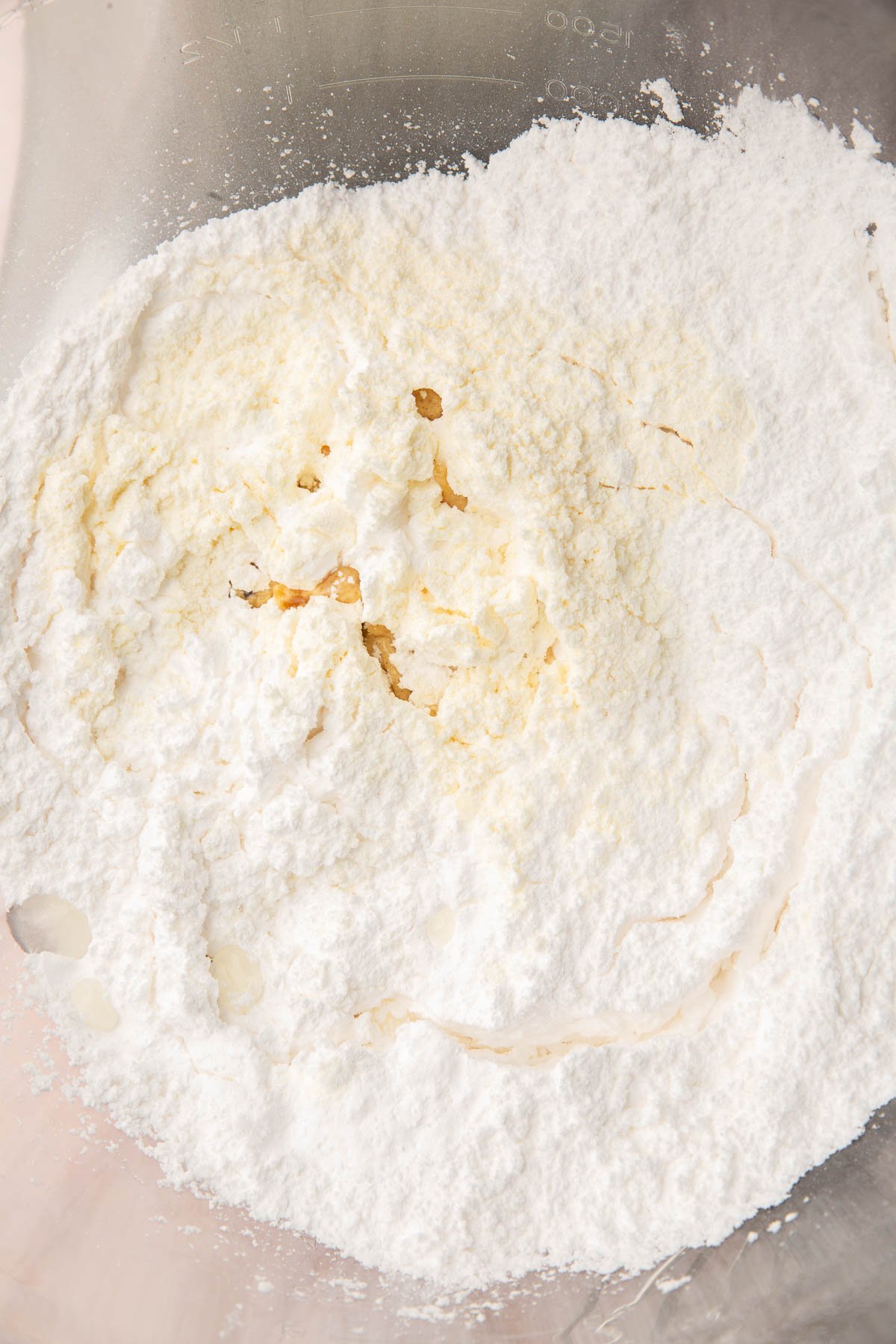
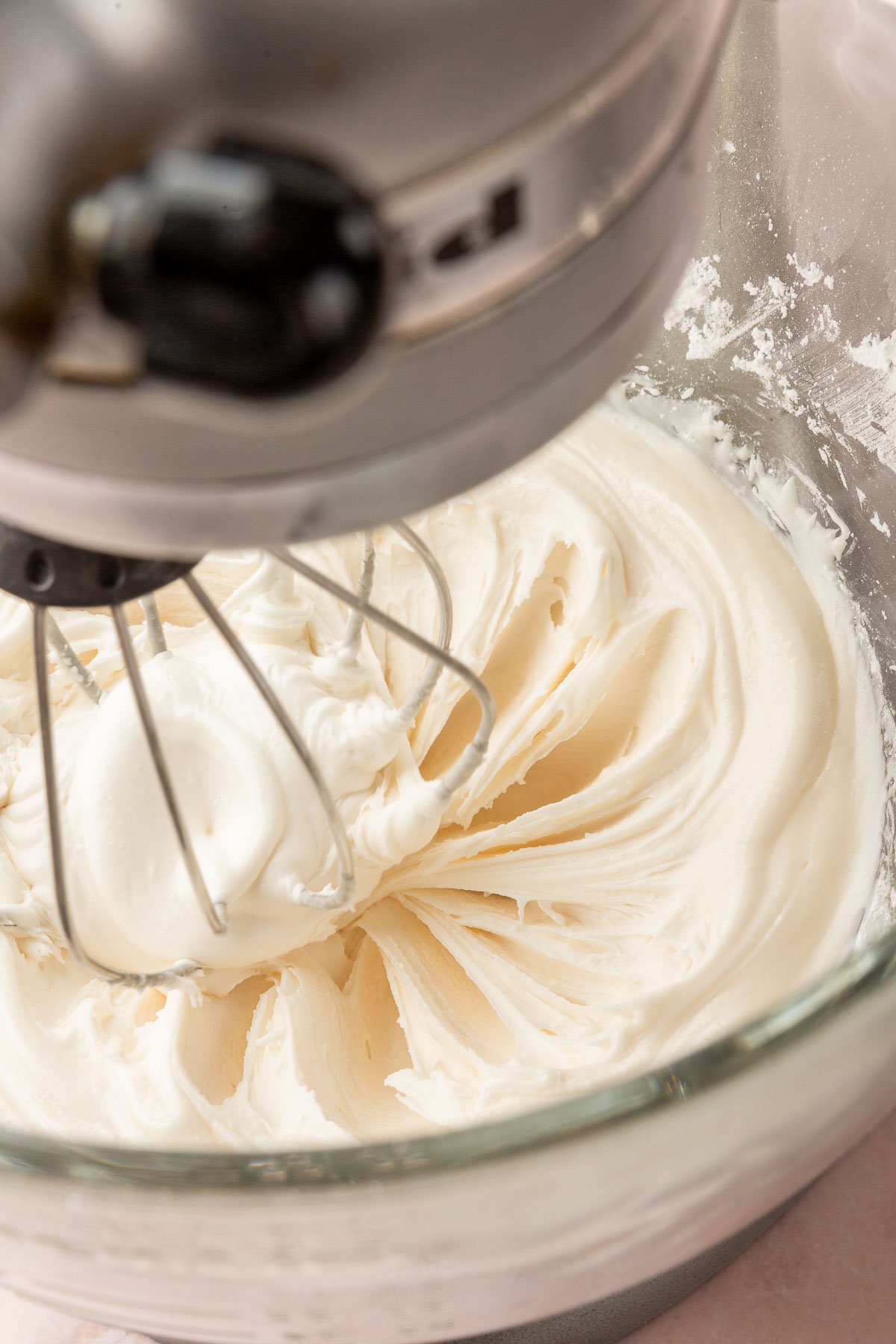
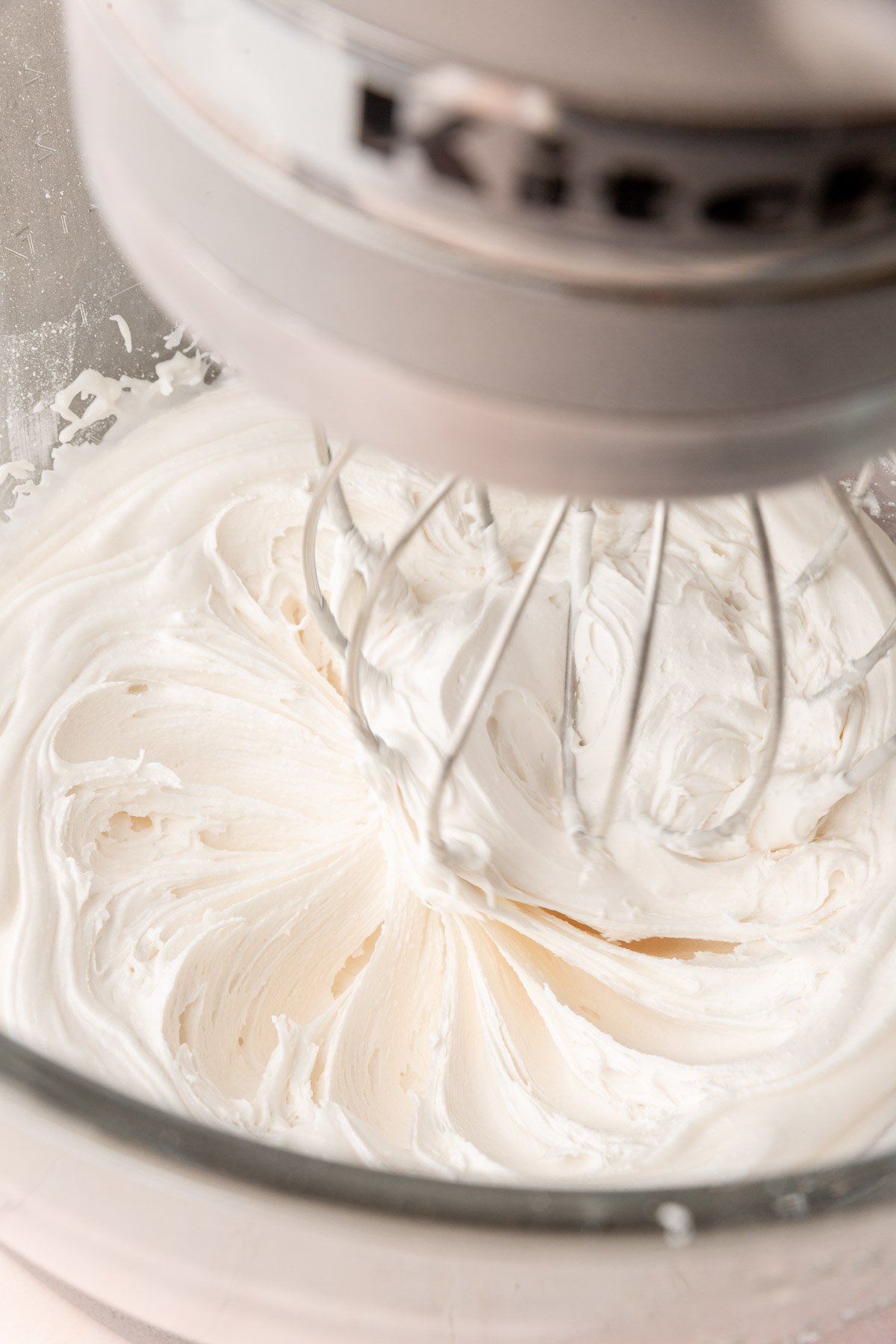
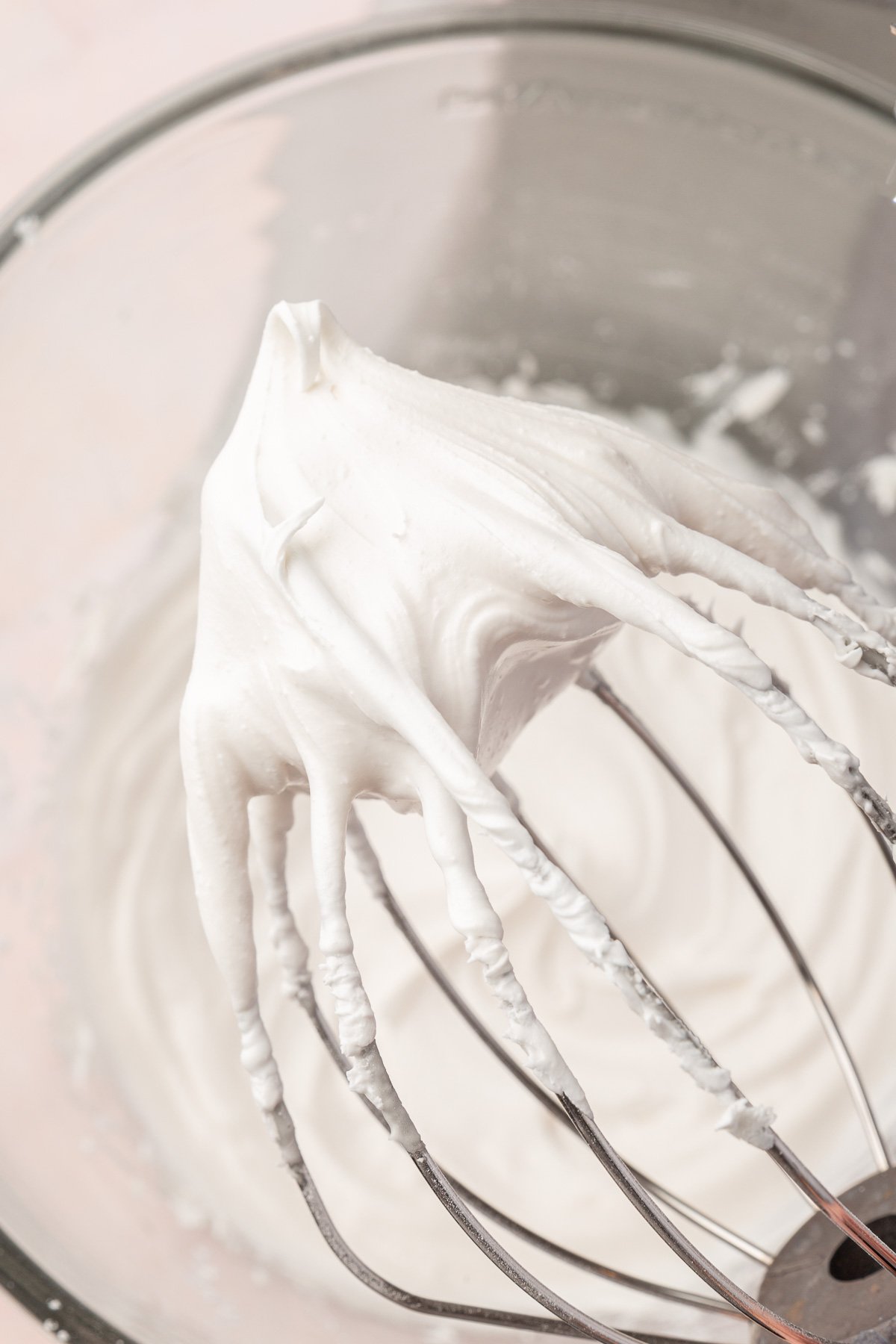
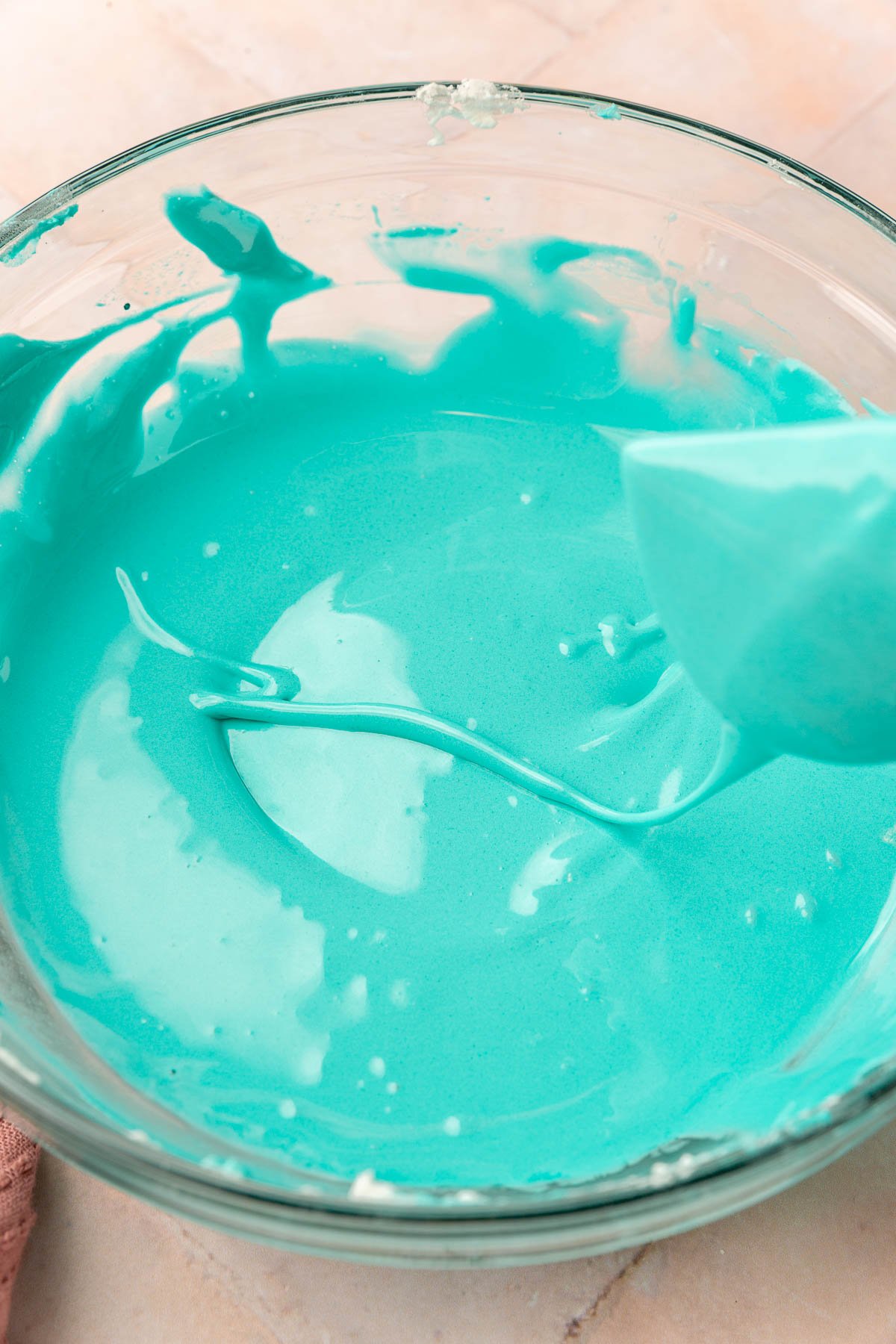
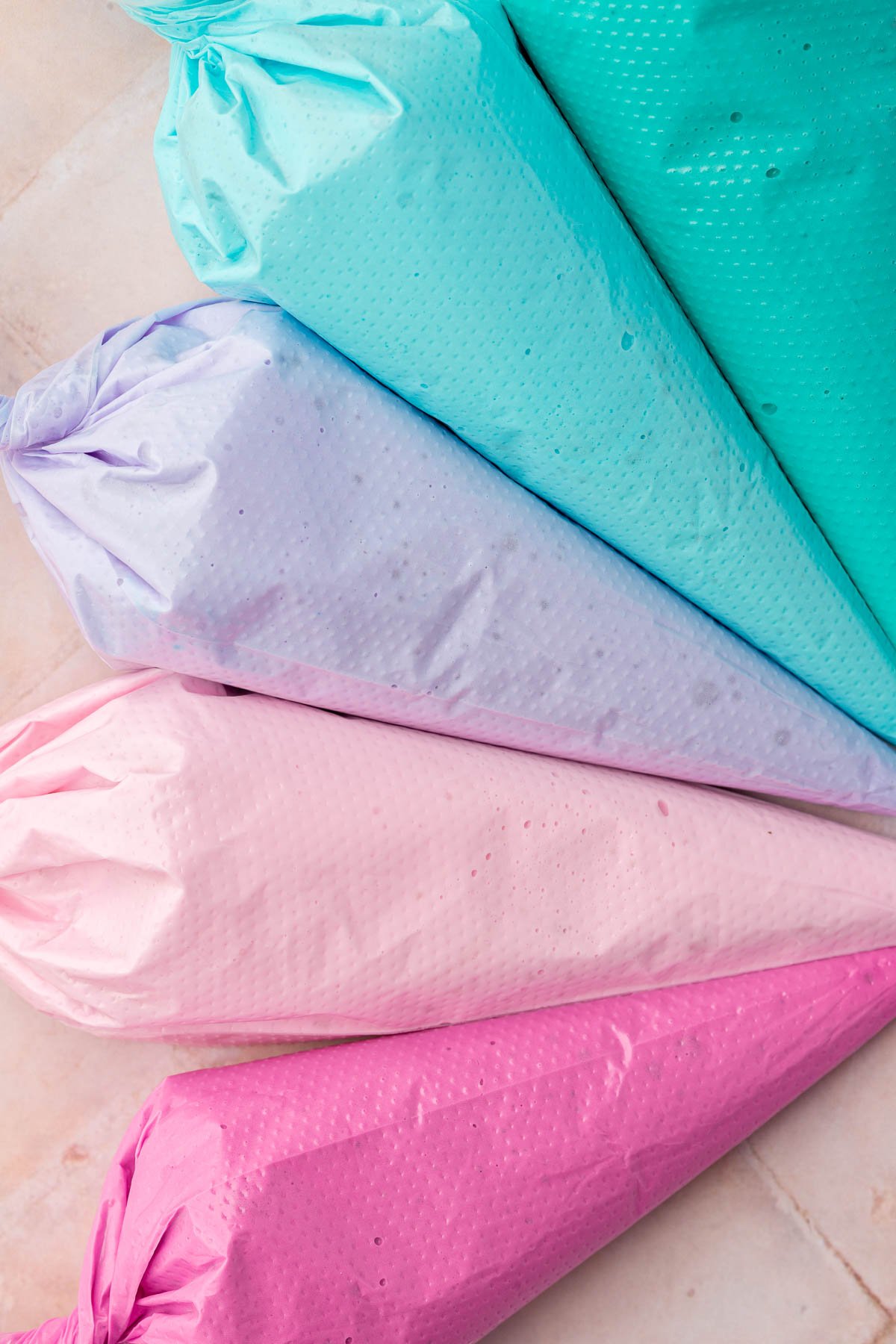
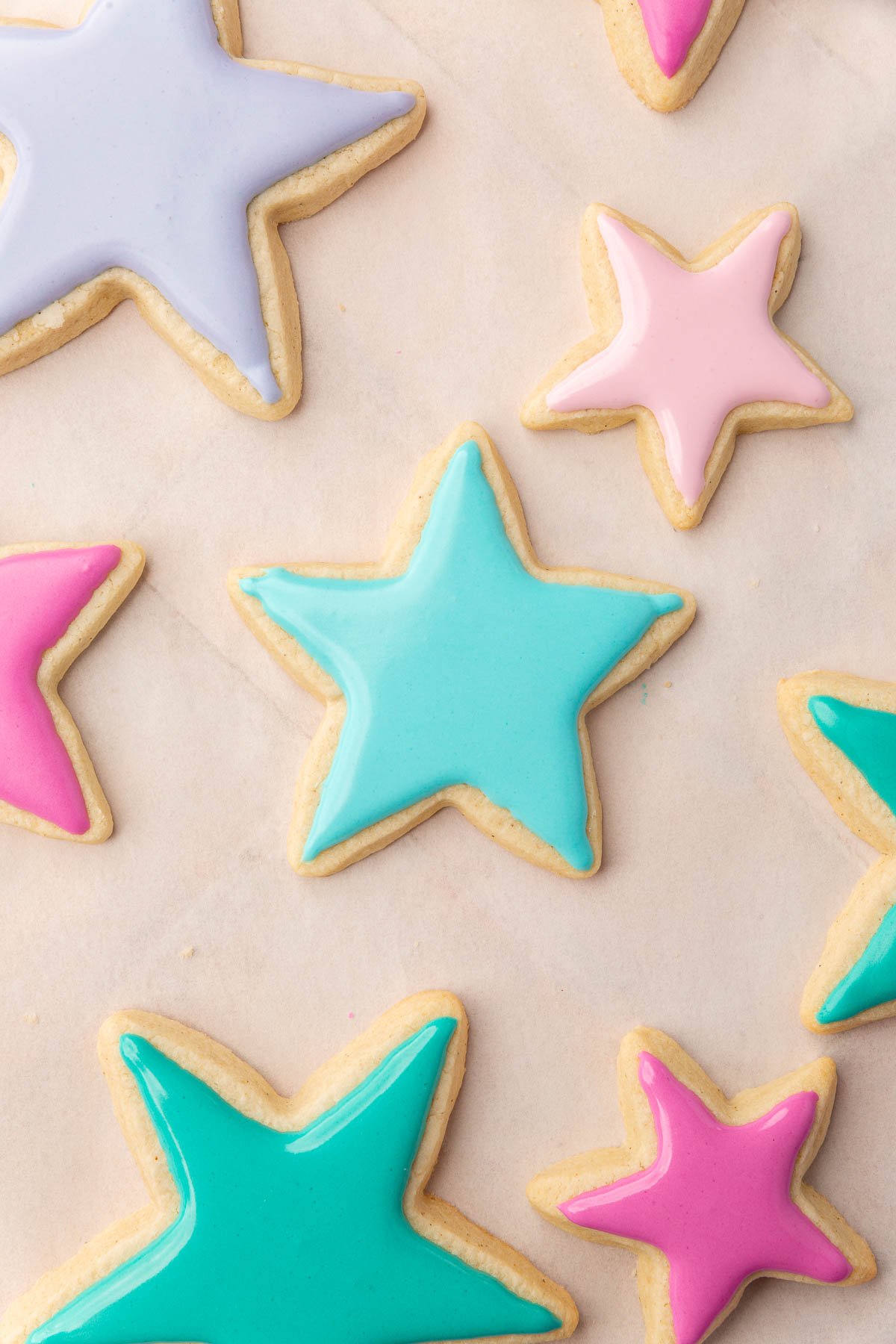
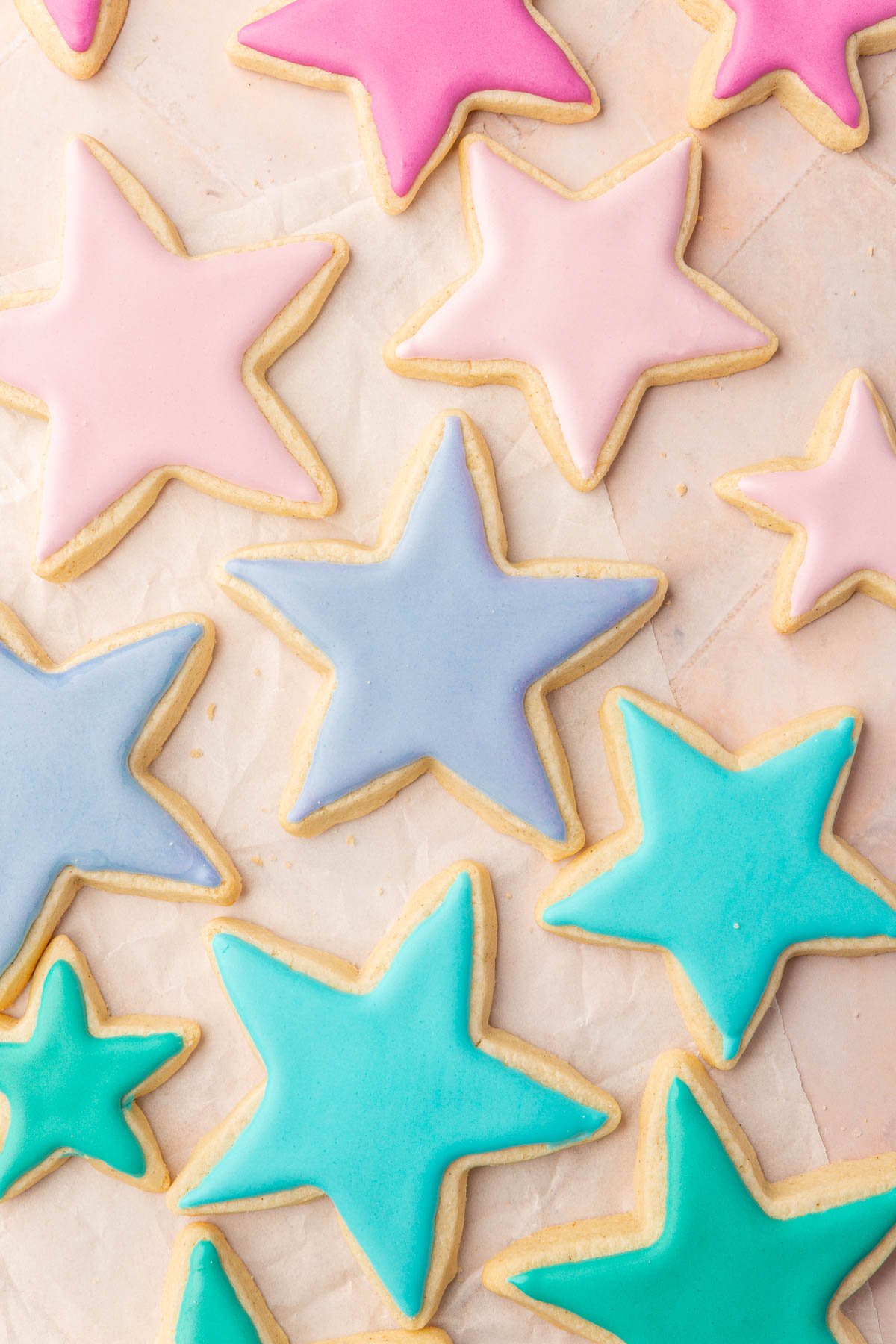
Recipe FAQs
This can be due to high humidity, too much liquid in the mix, or not beating it long enough. Ensure you mix it to the right consistency and allow enough drying time in a low-humidity environment.
When stored in an airtight container, royal icing can last up to 2 weeks at room temperature.
Yes, it can be frozen for up to 2-3 months. Thaw in the refrigerator and then re-whip before using.
If too thick, gradually add more water, a teaspoon at a time. If too thin, add small amounts of powdered sugar until the desired consistency is achieved.
You typically will get bubbles in your royal icing if it is too thin or has too much air incorporated. After thinning out my royal icing, I tap the bowl on the counter a few times to pop any bubbles. Also, if I see any bubbles when decorating the cookies, I use a toothpick or scribe to pop the bubbles before the royal icing dries.
You don’t want to rush the process, but I find that my flood icing takes about 4-5 hours to dry completely and thicker details will take about 1 hour to dry. I typically like to let my cookies dry overnight at room temperature without being covered up before stacking them and packaging up.
Absolutely! It’s also great for decorating cakes, gingerbread houses, and creating intricate piped decorations.
expert tips
Storage instructions
- Room Temperature: Store royal icing in an airtight container at room temperature for up to 2 weeks. Place a piece of plastic wrap directly on the surface of the icing before sealing the container to prevent it from drying out or forming a crust.
- Freezer Option: Royal icing can be frozen for up to 2-3 months. To freeze, place it in an airtight container or a zip-top freezer bag. If using a container, make sure to put a layer of plastic wrap directly on the icing’s surface before sealing. If using a zip-top freezer bag, press out all of the extra air before using.
- Thawing Instructions: To use frozen royal icing, first thaw it in the refrigerator overnight. Once thawed, the icing might separate or become slightly runny. This is normal. Simply re-whip it using an electric mixer on low speed until it reaches the original consistency.
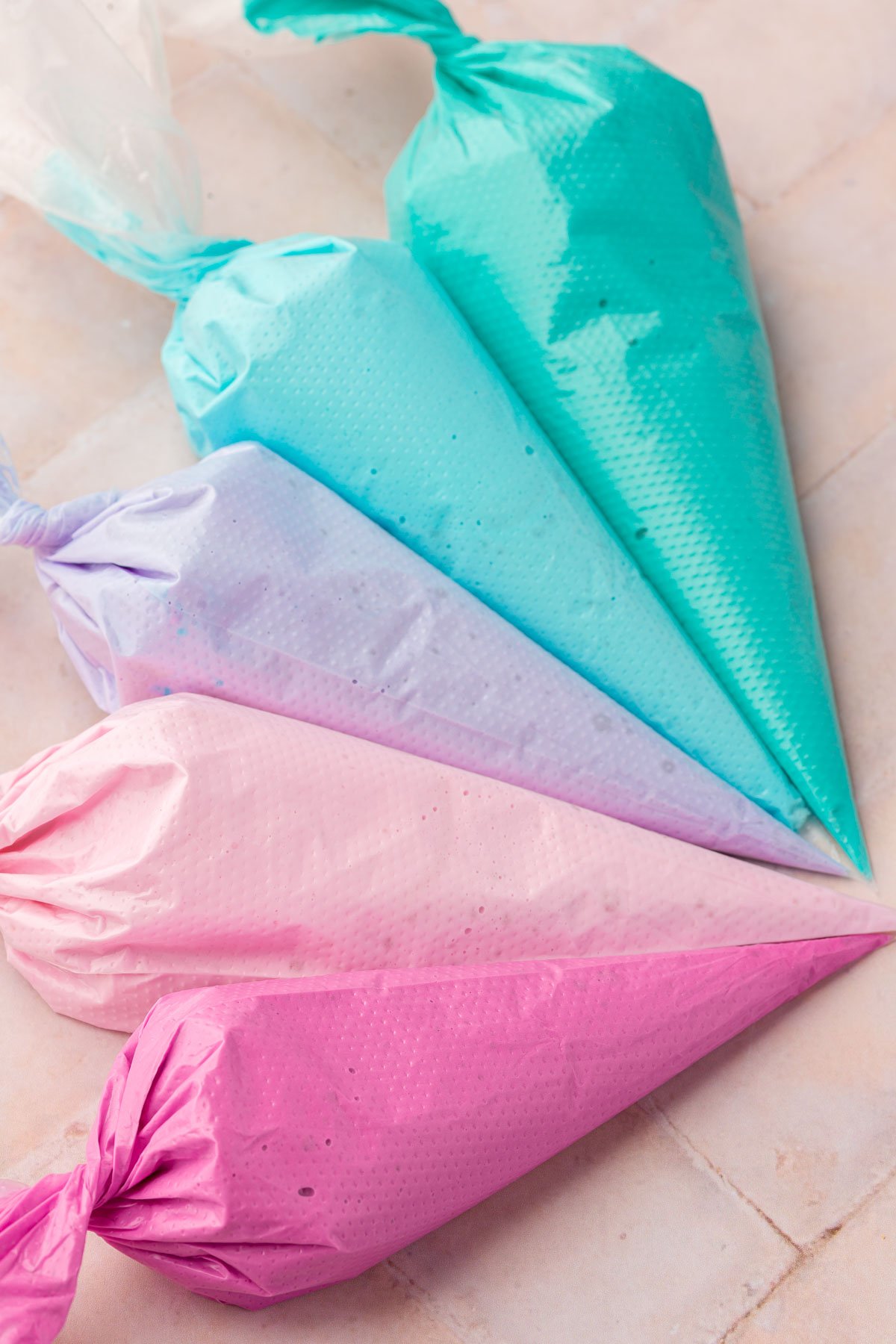
Recipes to try with royal icing
- Gluten-Free Sugar Cookies
- Gluten-Free Christmas Cookies
- Ugly Sweater Christmas Cookies
- Gluten-Free Gingerbread Cookies
- 4th of July Sugar Cookies
More cookies to try
Did you make this recipe?
I’d love to know! Please rate it and leave a comment below. You can also share your pictures and tag @adashofmegnut on Instagram.
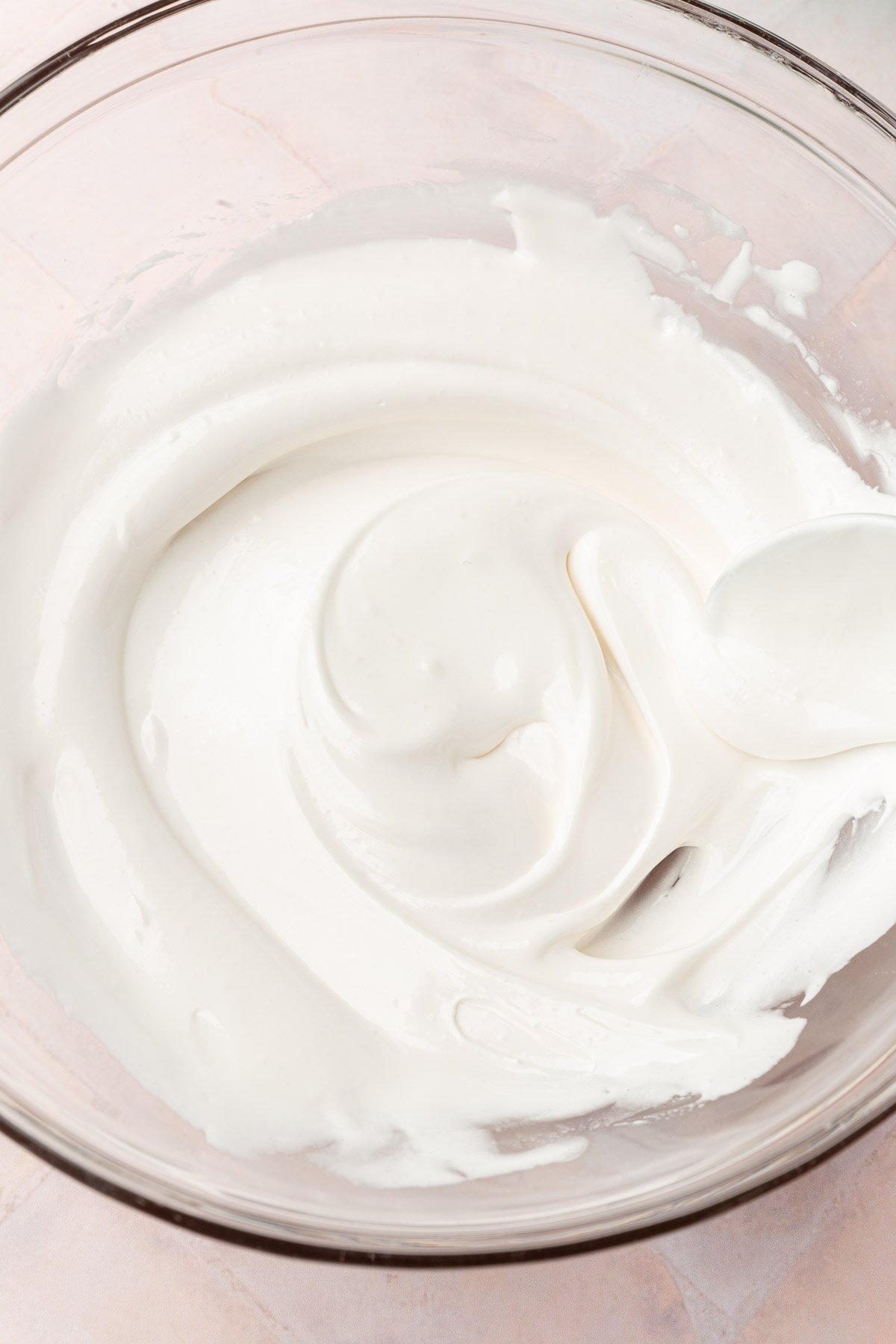
Royal Icing Recipe
Ingredients
- 4 cups powdered sugar - 480g
- 3 tablespoons meringue powder - 20g
- 6-10 tablespoons water - 90-150g
- 1 teaspoon vanilla extract - or almond extract
- AmeriColor gel food coloring - for decorating
**Use the toggle button above to turn the instruction photos on and off!
Instructions
- In a bowl of an electric mixer fitted with the whisk attachment, combine the powdered sugar, meringue powder, 5 tablespoons of water, and vanilla extract.
- Mix for 1-2 minutes on low speed, scraping down the sides to make sure everything has been incorporated. This will help ensure you also don’t get a big cloud of powdered sugar all over your kitchen.
- Turn the speed to medium-high, and mix an additional 3-4 minutes until the ingredients are well blended, the royal icing has increased in volume, and the icing has a relatively matte finish. Note, if you’re using a hand mixer instead of a stand mixer, this will take closer to 8-10 minutes. The royal icing will be thick; This is the base consistency to start with. Royal icing dries out quickly, so make sure it is covered at all times with a wet paper towel or wet kitchen towel unless it’s in a pastry bag.
- I usually add about 1 teaspoon more of water for a good outline icing (I use a 15-second rule, meaning if you drizzle the icing with a spoon or spatula over the bowl of icing it will melt back into the icing in 15 seconds. Depending on how thin your icing needs to be you can add anywhere from 1-4 more tablespoons of water, as needed. Go slowly, adding ½ teaspoon at a time at most, as it’s easier to thin out your icing than it is to make it thicker again.
- If your royal icing is too thin, you can add small amounts of powdered sugar to thicken it, but I prefer to add just small bits of water at a time to ensure my royal icing doesn’t get too thin.
- Add gel food colorings a little at a time as needed to color the icing. The color will deepen as it sits.
Notes
- For outline/flood consistency of royal icing, I like to use one consistency because it is more efficient for more and requires less pastry bags. For outline/flood consistency, I use a 15-second icing.
- For more detailed work, I use between 20-second and 25-second icing depending on how much detail I am looking for.
- If you’re looking to use royal icing to create a gingerbread house, you’ll want it to be really thick to assemble the walls. Start with the base consistency and go from there. You want the icing to be pipable so you don’t hurt your hands while assembling the house, but you also want to make sure it’s really thick so it’s strong. You may need to add a few sprinkles of water to the base consistency to make it a little easier to work with for gingerbread house assembling. For decorating, use 20-second to 25-second royal icing for intricate details. You can use something a little thinner if you are spreading onto candies for decorations.
- I use tipless piping bags 90% of the time. I just cut a small hole in the piping bag and use it from there. I will use piping tips if I want a specific shape for detailed work, like a small star tip, a leaf tip, etc.
- I prefer using gel food coloring instead of water-based food coloring because they are more vibrant and require less food coloring added to the royal icing. I find the water-based food coloring changes the consistency of my royal icing too much. AmeriColor gel food coloring is my favorite brand, as it is gluten-free and I love the squeeze-bottle aspect of it rather than other brands which have a screw-on top and can easily get messy.

